The moon is shrinking, it causes moonquakes
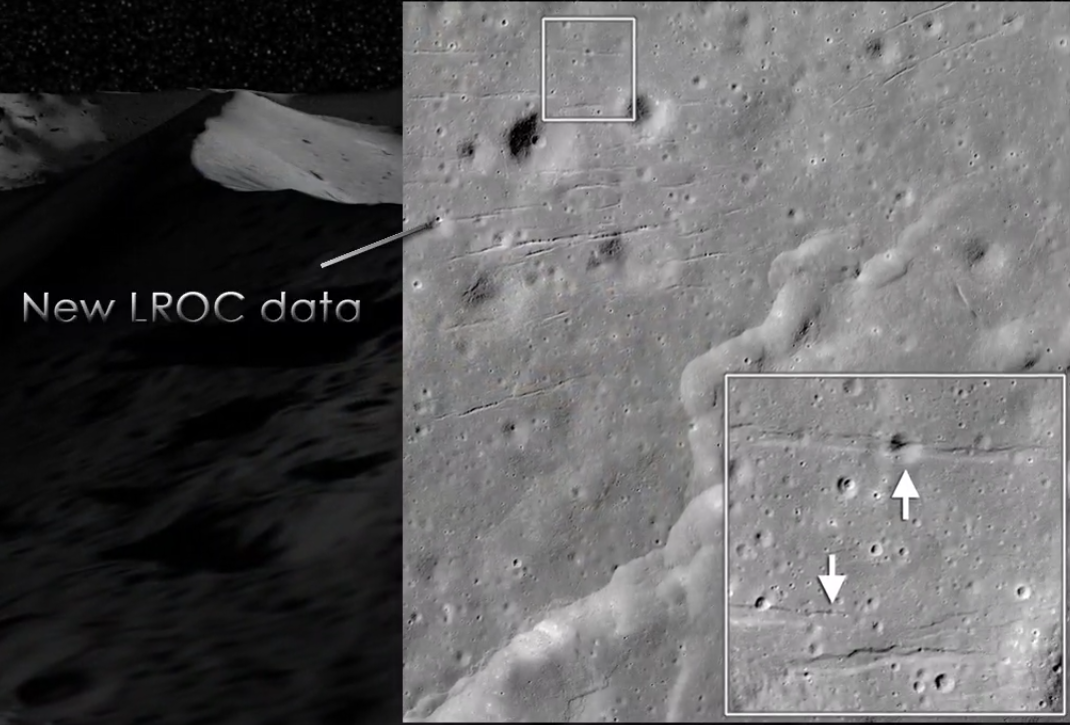
As the interior of the moon cools, over the past few hundred million years it has shrunk by 50 meters, and new folds, ditches, ditches and faults have appeared on its surface.
Launched by NASA on June 18, 2009, the lunar orbiting probe (LRO) continues to be used to obtain a lot of valuable scientific information and new discoveries.
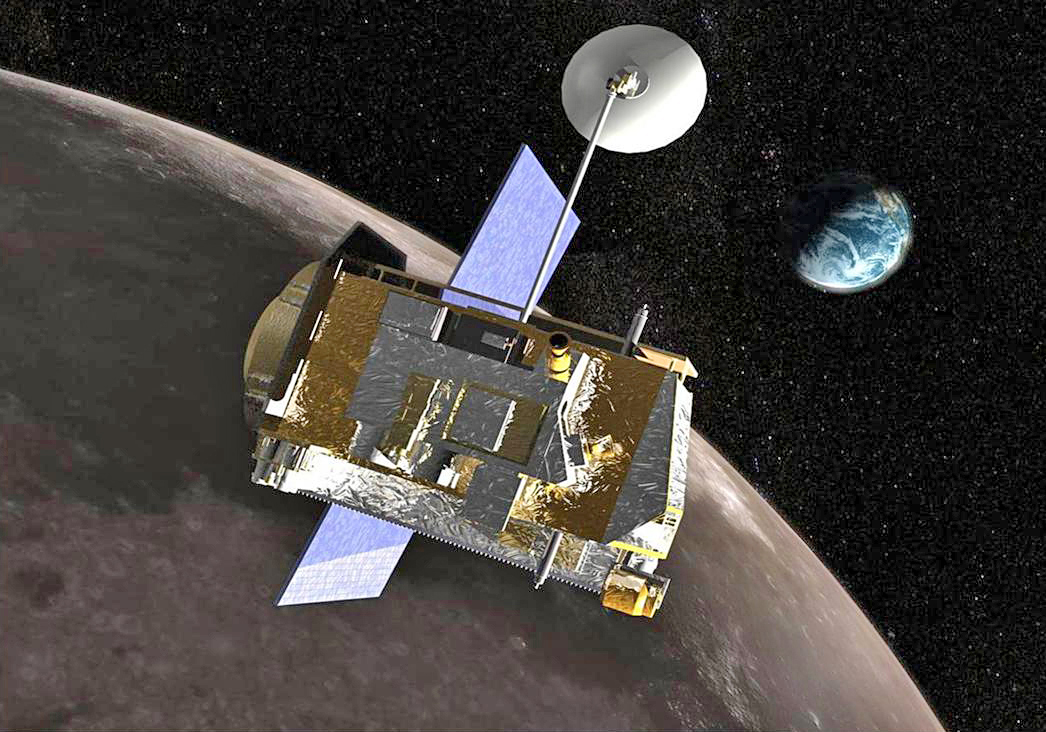
The current elliptical orbit is LRO (40x199 km), with the nearest orbit point at the South Pole.
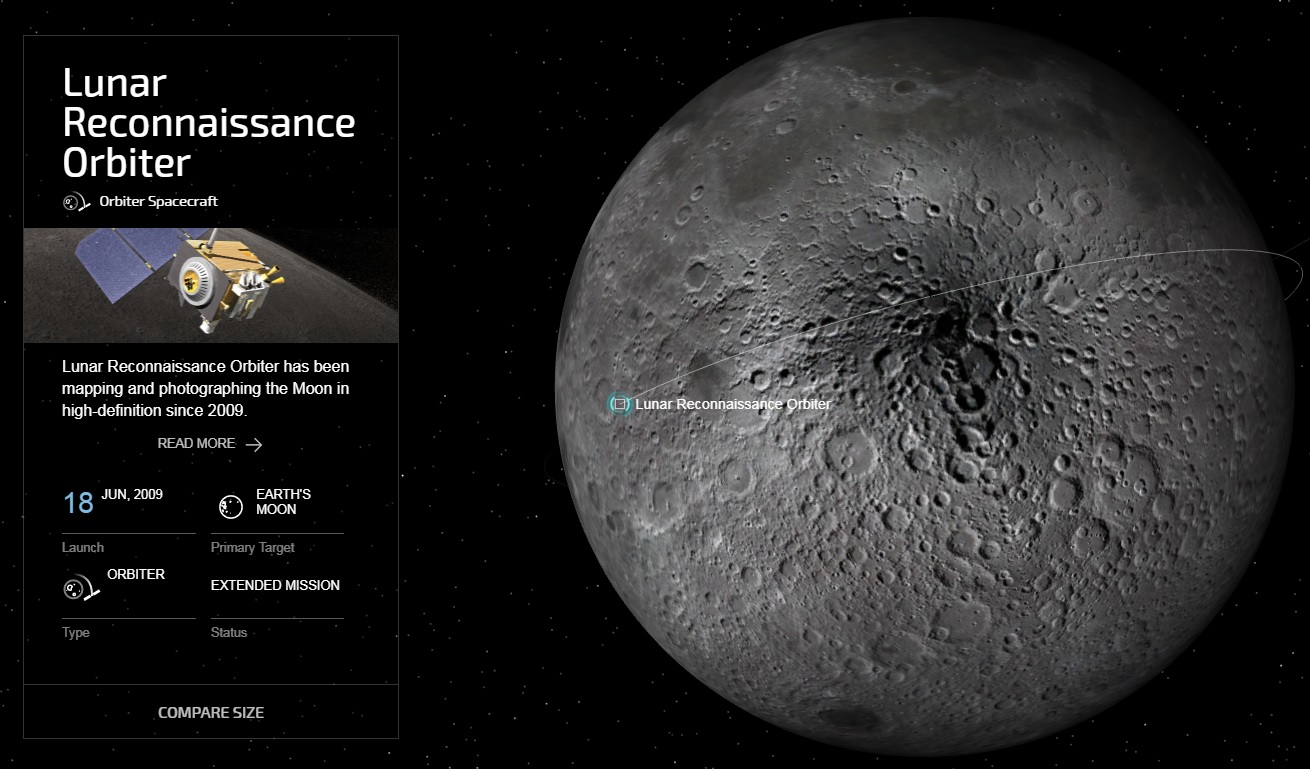
According to NASA, the LRO has a modular LROC camera (Lunar Reconnaissance Orbiter Camera) - the main optical camera for taking photos of the moon's surface with a resolution of up to half a meter.
LROC consists of three cameras: a low-resolution camera (WAC) and two high-resolution cameras (NAC), the first of which is intended for obtaining general plans of the area, and the other two for high-resolution photographs.
Billions of years ago, on the moon, huge pools were formed in their areas, which we now call the Seas.
Lunar seas are vast, once filled with basaltic lava lowlands. Initially, these formations were considered ordinary seas. Subsequently, when this was disproved, they did not change the name. Lunar seas occupy about 40% of the visible area of the moon.
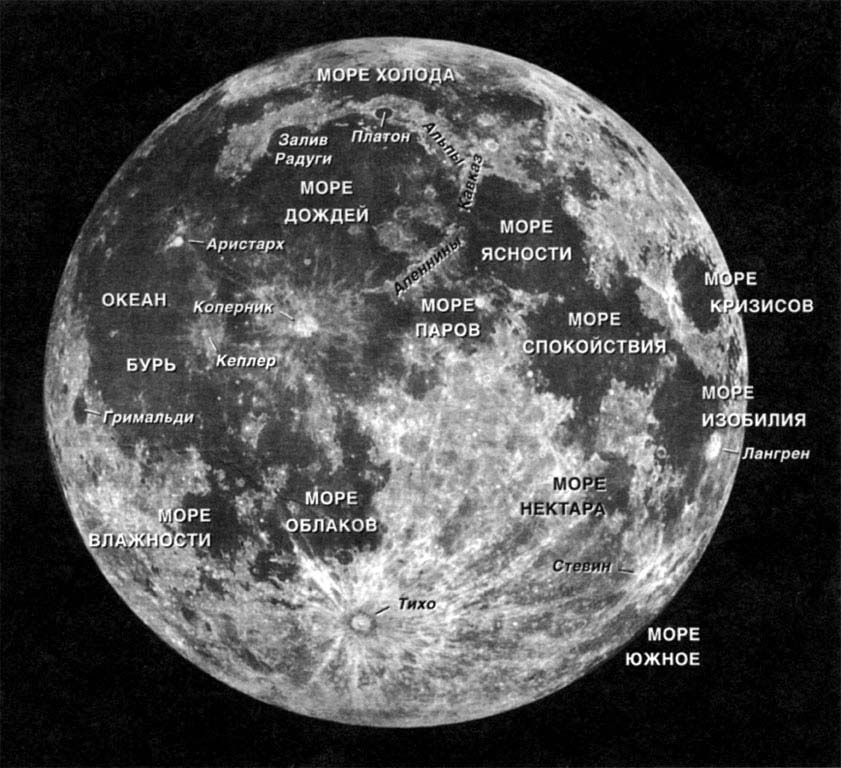
Studies of these formations were carried out by many scientists who came to the conclusion that all these pools have long been dead, because according to their calculations, the last geological activity took place on the Moon long before dinosaurs inhabited the Earth.
However, a detailed computer analysis of more than 12,000 images from the LRO probe produced completely unexpected results, which show that in at least one investigated area of the lunar surface recently there was weak geological activity, new cracks appeared on the surface and displacements of the upper layers were recorded.

Moreover, part of these cracks and faults goes through existing craters, that is, these deformations formed after meteorites fell on the surface of the Moon in this place.
But scientists and astronomers have several ways to determine the age of impact craters on the Moon, including by analyzing images with LRO (the brighter, the younger), according to the degree of destruction and the sequence of formation.
After all, the appearance of each crater is accompanied by the appearance of a wide region around it with a modified reflection coefficient. Sometimes (in 84% of cases) the reflectivity of such an area turned out to be several percent increased, sometimes decreased, there were also cases of areas around the craters with both increased and reduced reflectivity, since when a crater occurs, the lunar rock that has emitted from it is scattered around.
The regolith, which forms the basis of the lunar surface, is a loose, very porous, to some extent sintered soil. It consists of fragments of igneous rocks, minerals, glass and meteorites. It has a thickness of up to several tens of meters. According to estimates made by astronomers, the upper two centimeters of this regolith, which have a particularly high porosity (up to 90%), are responsible for the appearance of areas with reduced reflectivity, and increased reflectivity occurs when deeper and less loose rocks are ejected from the crater. Having studied the process of formation of lunar craters and the secondary processes accompanying it, scientists came to the conclusion that mixing of the upper few centimeters of regolith formed this layer for 80 thousand years.
The chronological scale of the geology of the moon.
By the way, in our time there are new craters on the moon.

This discovery gives us a new understanding of the understanding of the geology of the moon, as an actively changing world today.
The images of the LRO probe clearly show folds on the surface, curved contours of the hills and shallow long serpentine trenches that formed when the internal structures of the moon were compressed during their cooling.

Previous studies of the lunar surface also recorded similar deformations, but only in high-altitude mountain regions of the Moon, in the regions of Moray, such a phenomenon was recorded for the first time.
The difference between the lowest point and the highest point on the moon is 16 kilometers.
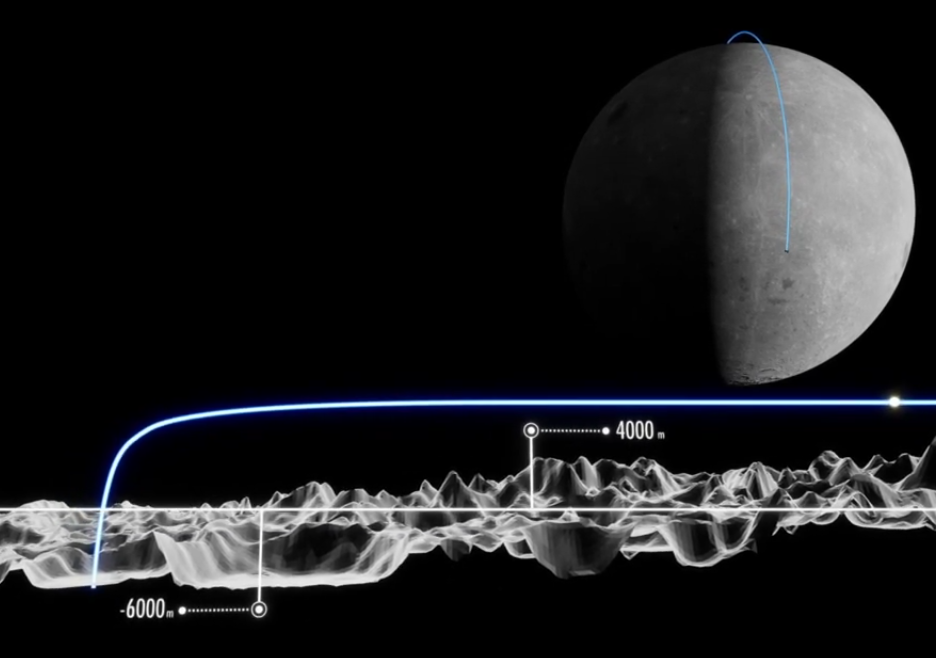
Moon topography data obtained using the LRO probe:
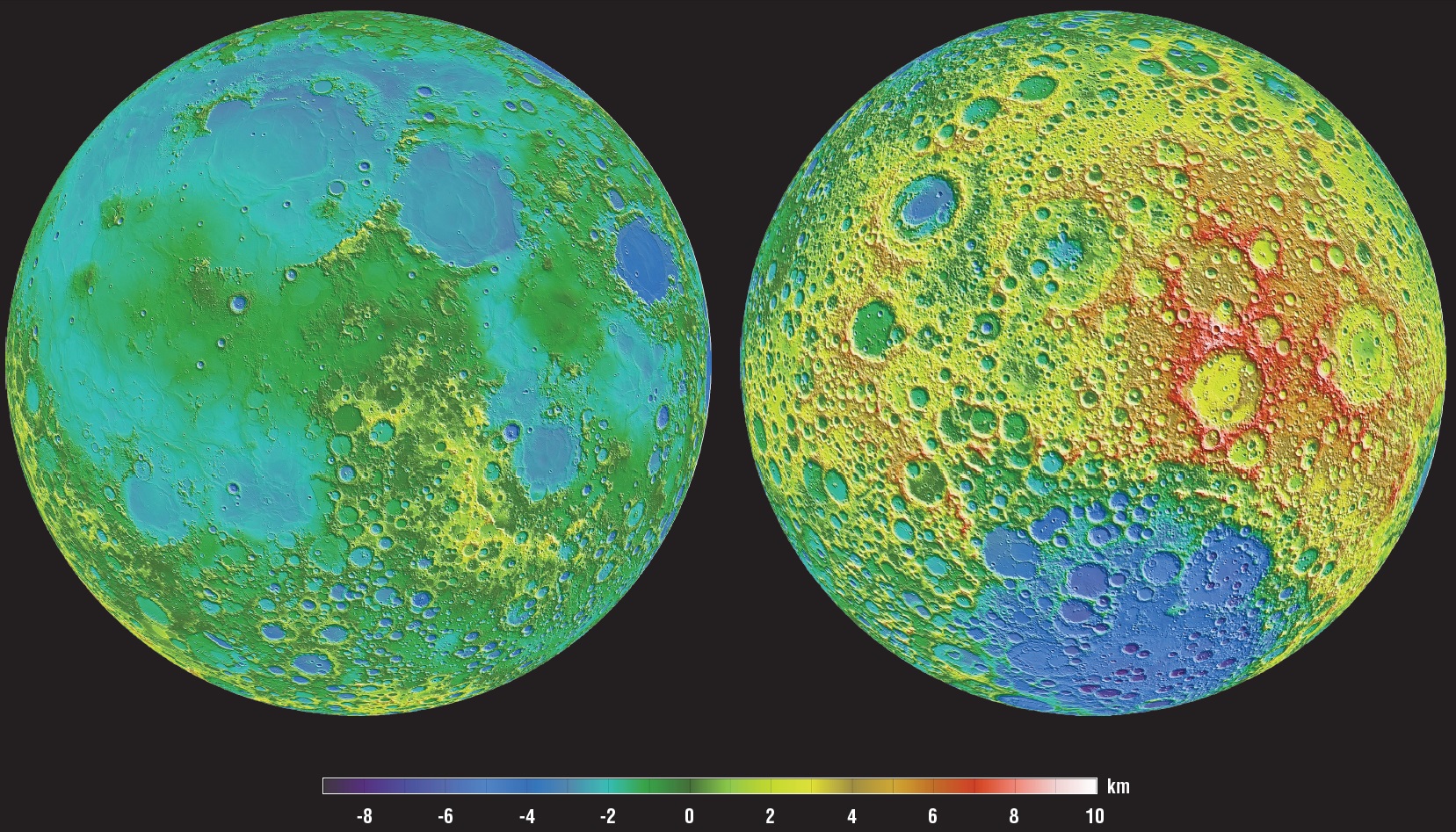
Using the LRO probe, NASA conducted a detailed study on the presence of surface deformations in the region of the Sea of Cold near the North Pole of the Moon, numerous surface formations were recorded - soil breaks, folds on the surface, ornate curved contours of hills and ridges.
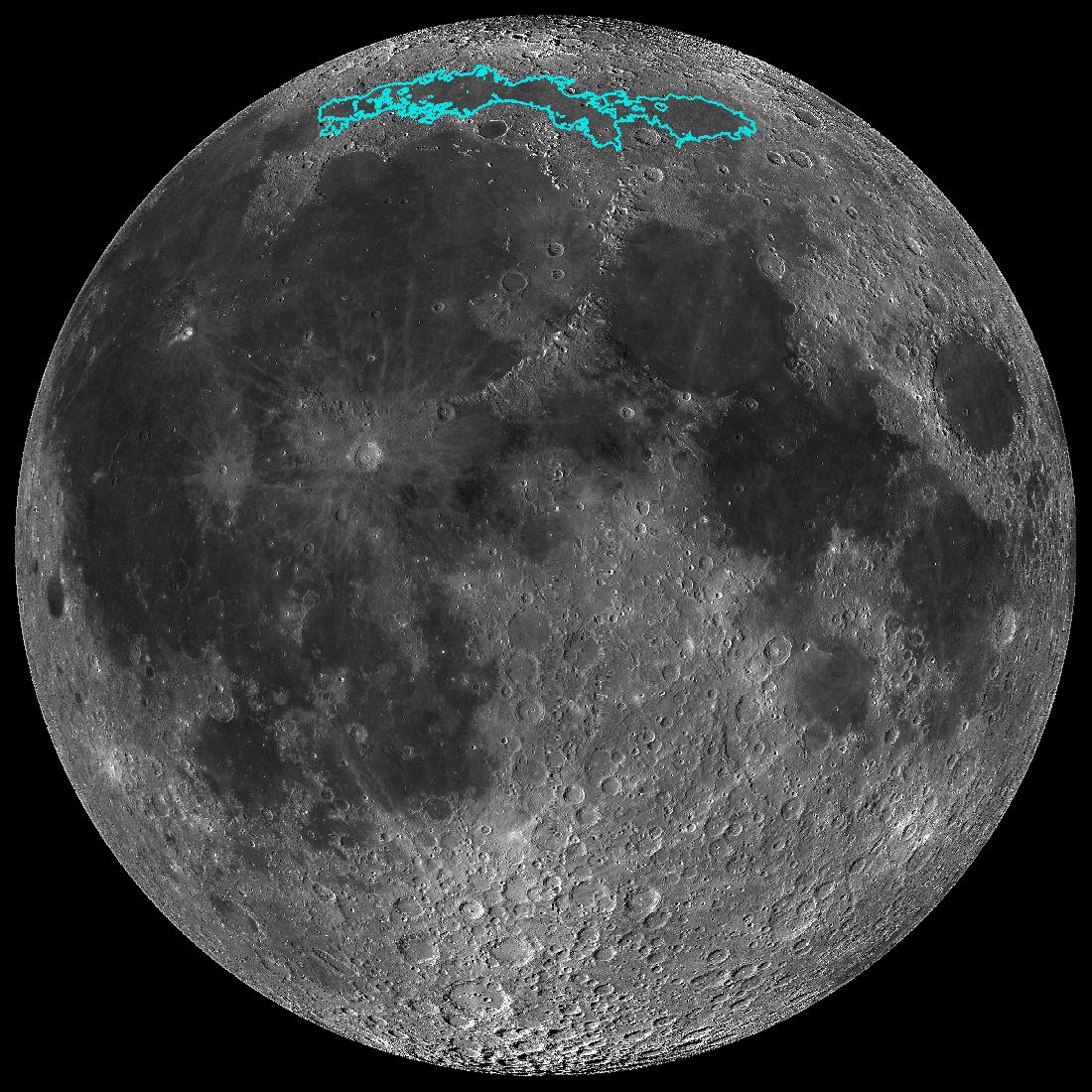
According to NASA researchers, some of the formations appeared quite a long time ago, about a billion years ago, while some of these deformations are much younger - no older than 40 million years, which is “recent” from a geological point of view.
Although, previous studies have shown that all geological activity in the seas stopped about 1.2 billion years ago.
On the Moon, as well as on Earth, tectonic phenomena and processes that cause moonquakes are different in strength and appearance.
The structure of the Earth and the Moon in the pressure scale: A
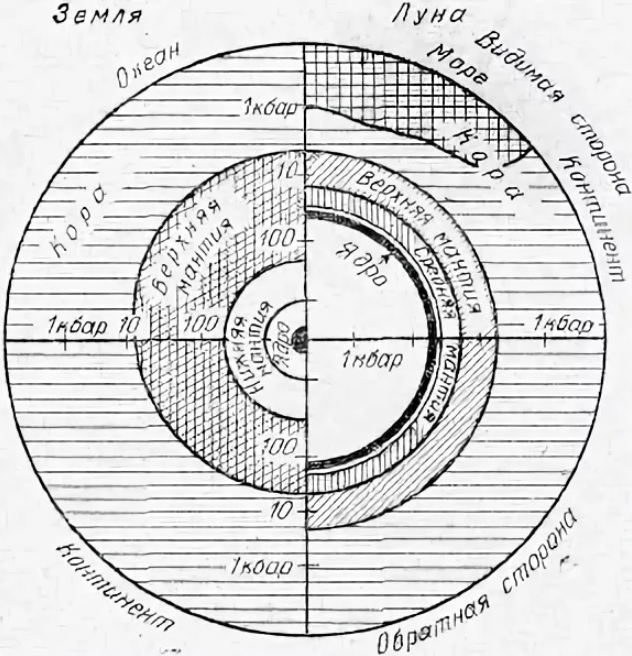
planetary feature of the deep structure of the Moon is its division into a powerful rigid, cold outer sphere and a heated, partially molten and plastic inner region.
On the surface of the moon, the temperature varies from + 125 ° C during the day to -170 ° C at night, while the temperature of the rocks at a depth of 1 m is constant and equal to −35 ° C.

The thickness of the Moon's crust averages 68 km, varying from 0 km under the lunar sea of Crisis to 107 km in the northern part of Korolev Crater on the reverse side.
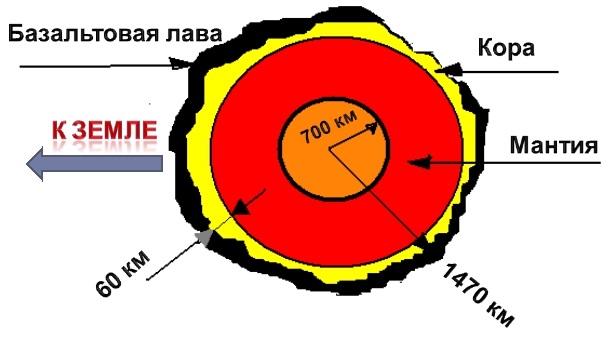
Under the crust is a mantle and a small core of sulphurous iron (with a radius of approximately 340 km and a mass of 2% of the mass of the moon).
The core temperature is estimated to be between 1327 ° C and 1427 ° C. The core heats the inner layer of the molten mantle, but it is not hot enough to warm the surface.
An example of the studied geological composition and characteristics of the upper part of the lunar surface that are deformed under the influence of moonquakes:
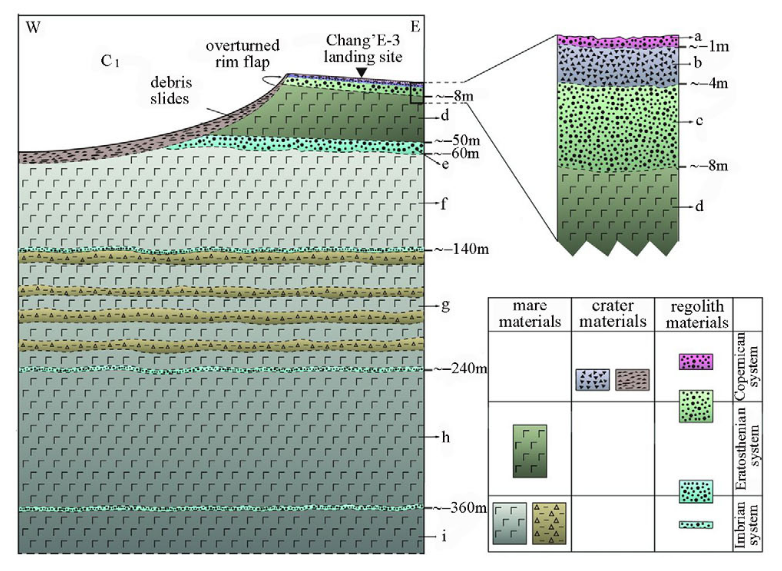
The Moon does not have tectonic (lithospheric) plates, and all endogenous geological processes occur as a result of a slow internal process of heat loss, which lasts almost 4.5 billion years.
Thus, lunar tectonic activity is likely due to the fact that the moon continues to shrink, like raisins, as its inner part cools and contracts. However, unlike the flexible peel on grapes, the lunar crust is fragile, which leads to its rupture and deformations on the surface.
The moon cools and contracts, becomes denser, and its surface shrinks and cracks more and more, new deformations are created on it:

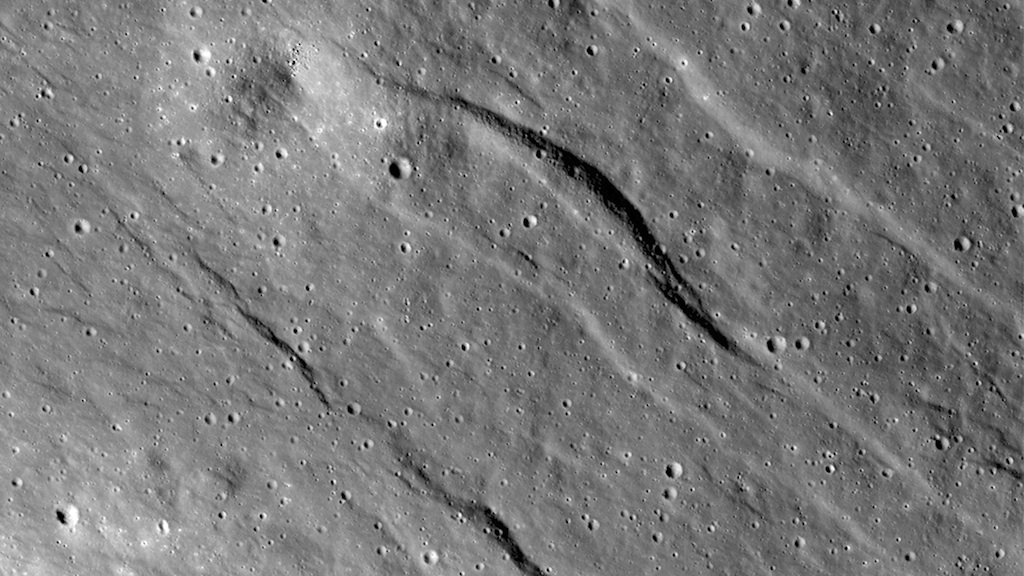
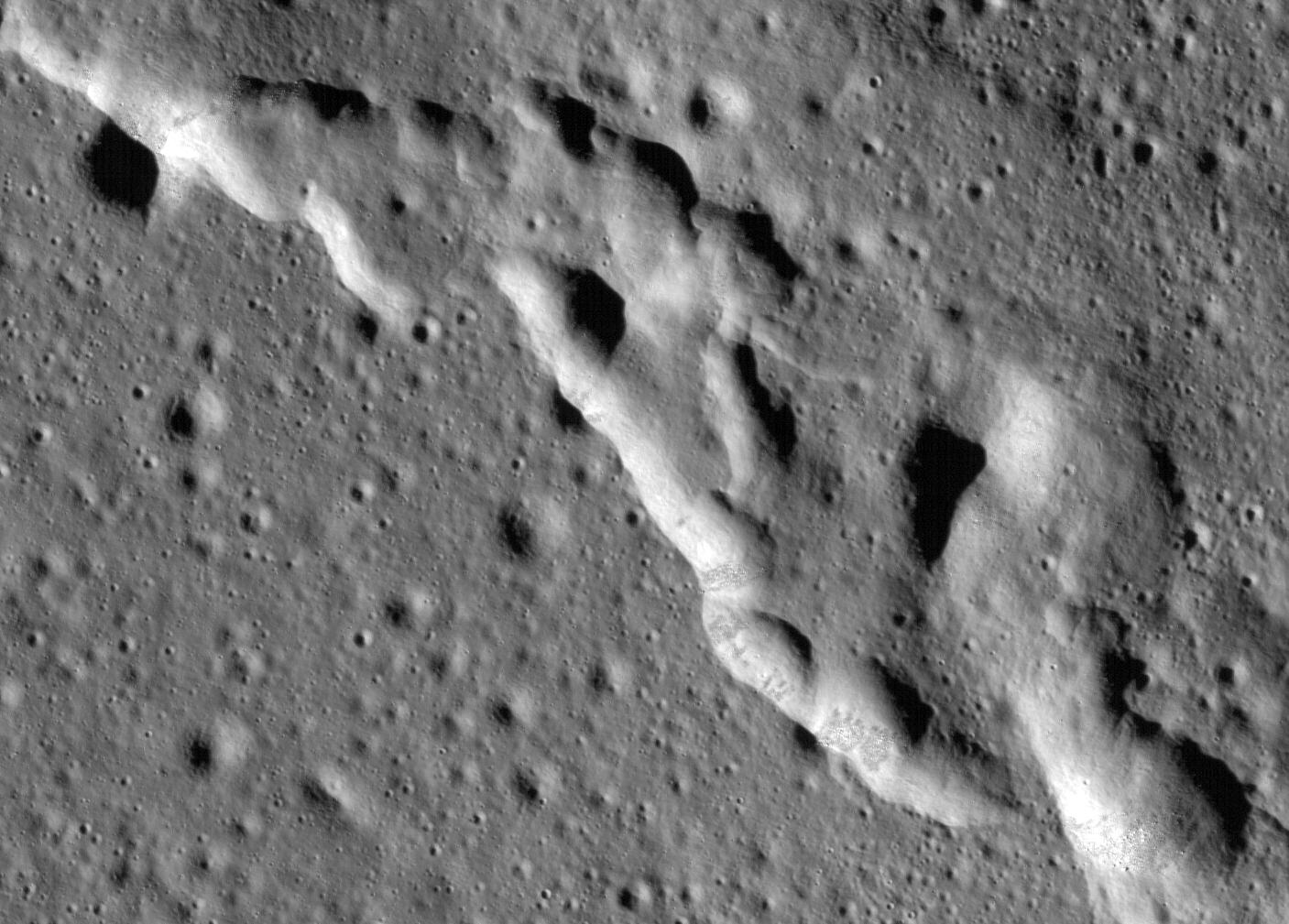
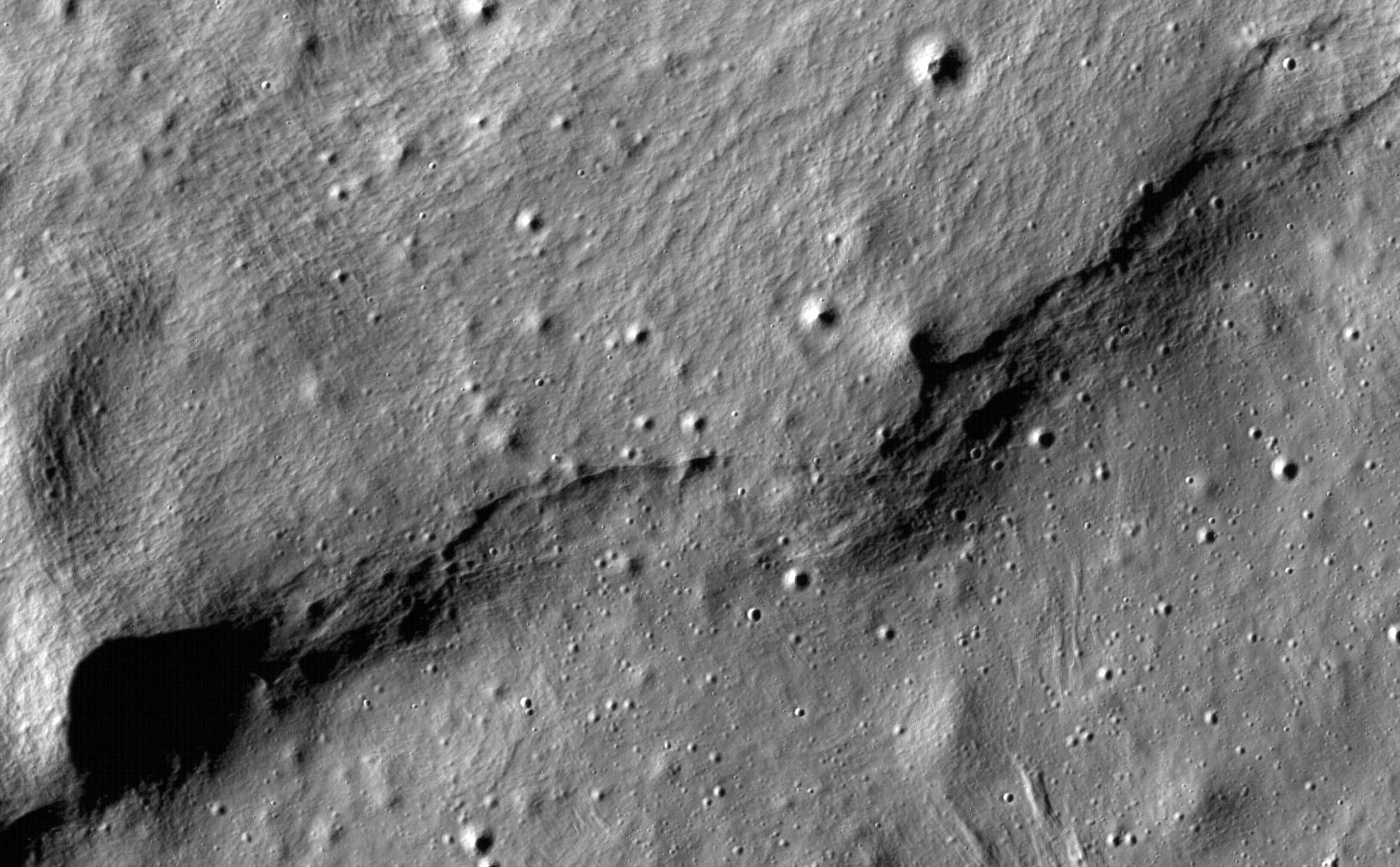
These are the trenches (grabens) that formed when subsiding parts of the moon's surface were recently detected by the LRO probe:

As moonquakes and contractions occurred under the surface of the Moon near the Sea of Cold, new tears, trenches and folds of soil appeared at the top. The longest of them extend to a distance of 400 kilometers and can rise to a height of 340 meters.


How many moonquakes due to such a compression process occurred recently on the moon?
This is where NASA was able to combine new data from the LRO probe with photos of the lunar surface faults and data from seismometers at the four landing sites of the Apollo missions on the Moon, which recorded 28 small moonquakes from 1969 to 1977, with a magnitude of 1, 5 to 5 on the Richter scale.

Some of these moonquakes could theoretically arise from the activity of lunar faults, but the location and depth of the sources of these moonquakes were uncertain.
NASA New Research Resultsled to an improvement in the assessment of the epicenters of small moonquakes, finding that eight of them were 30 km from young lunar faults, formed under the influence of stress that arose when the lunar crust again contracted.
Seven moonquakes within a radius of about 60 km from these faults, and they occurred when the Moon was at the farthest point in its orbit from the Earth, and some parts of the Moon experience the greatest stress from the gravitational attraction of the Earth.

Current near-surface stress state of the Moon (current near-surface stress state of the moon surface):

Thus, the seismic data that were obtained more than 40 years ago were now additionally interpreted and helped confirm that the Moon continues to be tectonically active, which will need to be taken into account in subsequent research expeditions.

NASA has already completed a project to install a new network of seismometers on the lunar surface to learn more about the inner part of the moon and determine how dangerous moonquakes are. Also, with the help of this project, it is planned to study meteoritic strikes and other events that can cause moonquakes, but with excellent signatures from moonquakes that occur during fault displacement. The time for the implementation of this project has not yet been determined.
